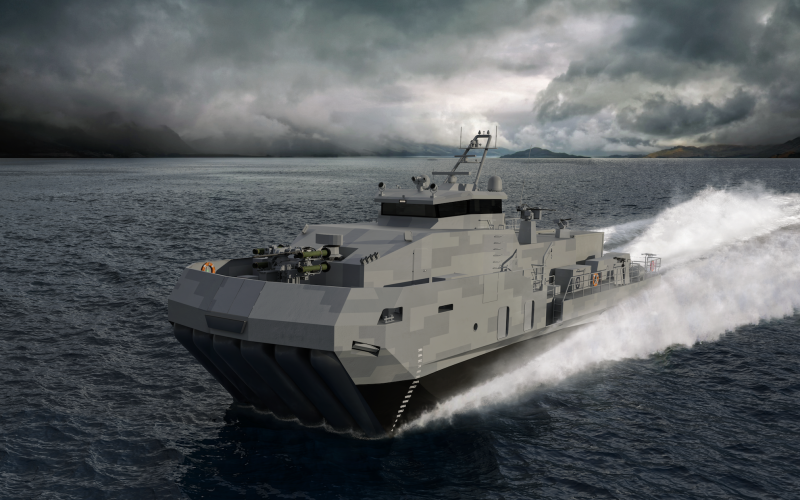Maritime and defense company, Eureka Naval Craft, Dover, Delaware, released a statement on Oct. 16 introducing the company’s launch, and its suite of naval defense and coast guard vessels. The statement highlighted that the vessels’ ESNA Naval Architect’s Surface Effect Ship (SES) design technology deliver high-speed and multi-role capabilities.
The statement highlighted Eureka's vessels are specifically engineered for critical missions, including patrol, interdiction, reconnaissance, and attack, providing agile defense of vital infrastructure and naval bases across diverse environments. Outfitted with cutting-edge modular systems, in collaboration with defense solution OEMs, Eureka noted that its vessels ensure comprehensive protection against threats from the surface, air, and underwater.
Eureka stated its versatile suite of vessels excel in diverse mission profiles, from sea denial to logistics and medical evacuation, ensuring mission success in even the most demanding high-threat environments. The statement noted these vessels are capable of operating from amphibious landing ship well decks and conducting beach landings with self-recovery. Additionally, they can be converted to remote unmanned operations, enhancing their flexibility and utility in modern naval operations.
The vessels that Eureka are introducing to market include:
AIRCAT Lynx, a 118’ LOA Coast Guard/ Border Patrol/ Fisheries Patrol vessel with a 1,000 nm range at 38 kts cruising speed (46 kts max speed). Crew capacities are four-to-seven depending on the mission, and can accommodate between 15-17 persons (mission depending, or if casualty rescue 34 persons) in addition to crew. Eureka states this vessel is suitably equipped for search and rescue, medivac, vessel traffic monitoring, pollution response and readiness, maritime law enforcement, counter-piracy, counterterrorism, and suppression of illegal activities, including unreported and unregulated fishing, human/ narcotics/ weapons trafficking. Optional primary armament includes optional 30mm and 12.7mm remote weapon stations with a 360 4D hemispheric radar and full spectrum optronics, an ISR Drone, and numerous manual machine guns. The vessel has space on aft deck for two 20’ ISO mission/ payload containers (capable of carrying drones, RHIBs, pollution response equipment, survey/scientific packages).
AIRCAT Jaguar, a 57.5’ LOA Landing Craft Vehicle Personnel Improved (“LCVP(I)”) with a 350 nm range at 38 kts cruising speed (48-50 kts max speed). Eureka noted this landing craft is low observable in form and can carry three crew plus 24 marines or two MTZR ATVs with their crew. The vessel is optionally equipped with active defense countermeasures and armed with 12.7mm remote weapon station for contested littoral ops with pervasive drone and anti-ship missile threats.
AIRCAT Panther, a 57.5’ LOA Autonomous Surface Vessel (“ASV”) with onboard space for 20 ft ISO mission/ weapon payload container contained within a low observable form with a 350 nm range at 38 kts cruising speed (50 kts max). Eureka noted this ASV is intended to conduct logistics and/or distributed attack/ defense ops (could be configured to carry 4 x anti-ship missiles for attack, mobile distributed point air defense, and/or high volume containerized swarming loitering munitions package).





